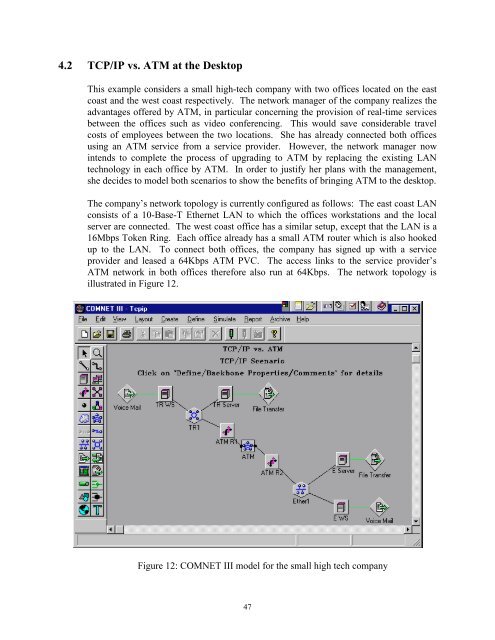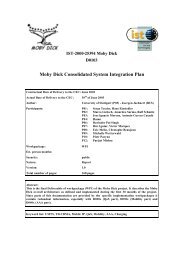COMNET III CACI
COMNET III CACI
COMNET III CACI
You also want an ePaper? Increase the reach of your titles
YUMPU automatically turns print PDFs into web optimized ePapers that Google loves.
4.2 TCP/IP vs. ATM at the Desktop<br />
This example considers a small high-tech company with two offices located on the east<br />
coast and the west coast respectively. The network manager of the company realizes the<br />
advantages offered by ATM, in particular concerning the provision of real-time services<br />
between the offices such as video conferencing. This would save considerable travel<br />
costs of employees between the two locations. She has already connected both offices<br />
using an ATM service from a service provider. However, the network manager now<br />
intends to complete the process of upgrading to ATM by replacing the existing LAN<br />
technology in each office by ATM. In order to justify her plans with the management,<br />
she decides to model both scenarios to show the benefits of bringing ATM to the desktop.<br />
The company’s network topology is currently configured as follows: The east coast LAN<br />
consists of a 10-Base-T Ethernet LAN to which the offices workstations and the local<br />
server are connected. The west coast office has a similar setup, except that the LAN is a<br />
16Mbps Token Ring. Each office already has a small ATM router which is also hooked<br />
up to the LAN. To connect both offices, the company has signed up with a service<br />
provider and leased a 64Kbps ATM PVC. The access links to the service provider’s<br />
ATM network in both offices therefore also run at 64Kbps. The network topology is<br />
illustrated in Figure 12.<br />
Figure 12: <strong>COMNET</strong> <strong>III</strong> model for the small high tech company<br />
47
















